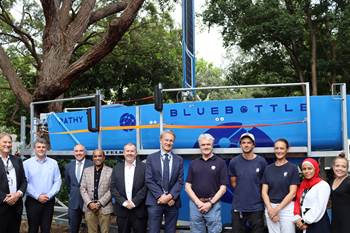Search Results
Showing 11 – 20 of 32 results
The ACM CRC, with Ocius Technology and the University of New South Wales, collaborate to bring bio-inspired FRP “flippers” tailored to achieve optimal propulsion for all weather conditions.
Maiden flight of the biomimetic adaptable wing establishes baseline for future fuel consumption reductions, sets milestone for ground testing and flights beginning 2024.
As biomimetic design continues to inform composites manufacturing, technologies like 3D printing, tailored fiber placement, braiding and filament winding prove strong candidates for making these structures a reality.
Composite underbody panel for battery pack protection, made of stacked multiaxial noncrimp fabric, will serve high-volume commercial and automotive markets.
Exel adapted carbon fiber profiles originally designed for wind turbines to meet the low-drag, high-flexibility and long-term fatigue performance demands of this renewable energy system’s nature-inspired membrane.
Despite persistent supply chain issues, markets were set for healthy growth before Trump policies and tariffs, yet long-term trends favor composites in new platforms. Meanwhile, advanced air mobility shakes out and moves forward.
Researchers at Jiangsu University of Science and Technology demonstrated obscured IR signatures of objects from human hands to aircraft fuselages, exceeding current stealth technologies at only 2.77 millimeters thickness.
Use case applications with Helicoid technology implementation demonstrated mechanical performance improvements, such as impact resistance and strength.
Concept details — such as CFRTP material incorporation, a biomimetic design and a focus on safety — provide a first look at how Hyundai integrate its mobility capabilities to develop commercial urban, regional air vehicles.
Helicoidal fiber-reinforced composites are the inspiration for new developments in rain erosion-resistant substrates, improvement in damage tolerance and sustainable composites.









